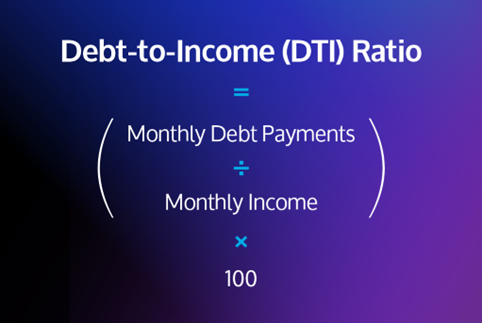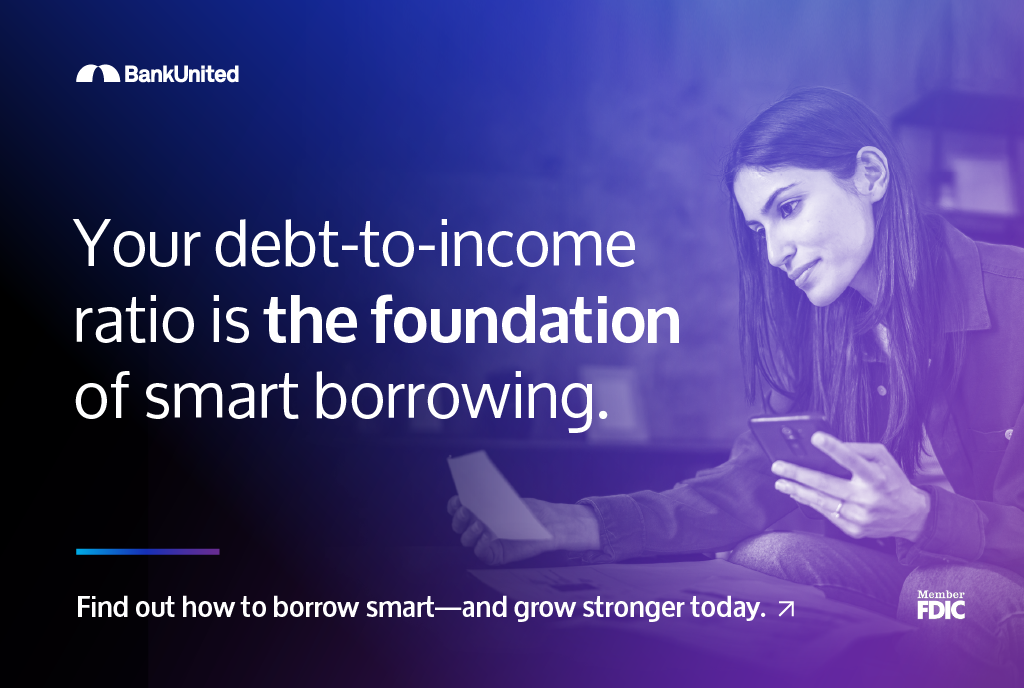Small business owners and entrepreneurs may be wary of taking on debt due to fears of undue financial burden, potential repayment difficulties, and other risks. But while it’s wise to be thoughtful and cautious about borrowing, debt is not inherently bad for a small business. In fact, when used strategically, debt could be a powerful driver of growth, expansion, and long-term success.
The key to reaping these benefits—and avoiding the potential pitfalls of debt financing—is having a clear understanding of when and how much to borrow, and how to deploy those funds in a way that ultimately enhances a business’s long-term health, rather than harming it.
Read on to learn more about some of the key factors that can transform debt from a potential negative into a valuable tool for building a stronger, more resilient business.

One of the most important parts of assessing your business’s borrowing capacity and financial health is the debt-to-income (DTI) ratio, which measures how much revenue your business earns in a given month compared to how much it spends over the same month on debt-related payments. For example, if your business’s monthly income is $100,000 and you spend $25,000 on debt payments each month, your DTI ratio is 25%.
Guidance around a healthy DTI ratio for a small business varies. Generally, a lower ratio may improve your chances of qualifying for financing and securing more favorable loan terms and interest rates. However, the ideal ratio also depends on your industry, business model, and the specific requirements of different lenders.
Your business’s DTI ratio is a good indicator of whether or not you’ve taken on too much debt compared to your revenue, and whether you can comfortably manage your existing debt obligations while still being able to fund operations and growth. As such, understanding your DTI ratio is crucial for making informed decisions about when to take on additional debt and how much overall debt your business can handle.
Because revenue and debt payments can vary from month to month, regularly monitoring your business’s DTI ratio is critical to gaining a clear picture of your borrowing capacity over time and making adjustments as needed to prevent financial strain. Accurate, ongoing awareness of your DTI ratio enables you to make informed borrowing decisions.
Healthy Debt Versus Risky Debt
For small businesses, it’s not just about knowing how much debt you can afford to take on; it’s also critical to be able to distinguish between healthy debt and risky debt. The difference between these two types of debt largely centers around the terms of a loan and why you're borrowing the money in the first place.
Healthy debt typically has these characteristics:
- Funds assets, projects, or expansions that are likely to generate financial returns that are greater than the cost of borrowing
- Has manageable terms including reasonable interest rates and repayment schedules
- Is likely to contribute to long-term business growth, productivity improvements, or cost reductions, based on realistic financial projections
Examples of healthy debt include loans for purchasing or upgrading equipment to increase productivity, financing expansion into new markets with proven demand, and acquiring inventory to fulfill existing customer orders.
Risky debt, on the other hand, often involves borrowing at high interest rates, taking on debt to cover everyday operating expenses, or racking up multiple loans without a clear repayment strategy. This type of borrowing can have serious consequences that can undermine your business's stability and future growth potential—and even threaten its ability to continue operating.
Optimize Debt for Sustainable Growth
When taken on and deployed wisely, debt might give you access to the capital you need to fund critical purchases, investments, and initiatives while maintaining the cash reserves and financial stability to fund day-to-day operations.
- Set clear objectives for borrowed funds. Before applying for a loan, set specific, measurable criteria for how the financing will benefit your business. This ensures that the debt will help accomplish your business priorities rather than becoming a financial burden.
- Match debt type to business needs. Different financing options—for instance, term loans, lines of credit, equipment financing, and Small Business Administration (SBA) loans—are designed to serve different purposes and thus have varying costs and benefits. Pick the type of loan that’s the right fit for your business’s specific needs.
- Focus on ROI. When considering a loan, calculate a realistic estimated return on investment (ROI) for the projects or initiatives associated with the debt. Only borrow if the projected ROI exceeds the total cost of the loan.
- Maintain a strategic debt-to-equity mix. Remember that debt is not the only type of financing available to a business. A healthy balance between debt and equity financing provides resilience against market fluctuations and economic uncertainties.
By following these key principles, you could use debt as a powerful strategic asset that fuels your business's long-term success.
Building a Stronger Business Through Smart Debt Management
Regular assessment of your financial position, including your debt obligations and repayment capacity, ensures that your borrowing remains aligned with your evolving needs and goals and ultimately helps build a stronger, more competitive business.
Remember that smart borrowing isn't about avoiding debt entirely; it's about using debt wisely to seize opportunities, power growth, build resilience, and help your business succeed over the long term.
Get a View of Your Business’s Financial Health
Smart borrowing starts with understanding your debt-to-income ratio. Is your business leveraging debt wisely?
Take our interactive quiz to assess your financial health and make informed decisions for sustainable growth.

